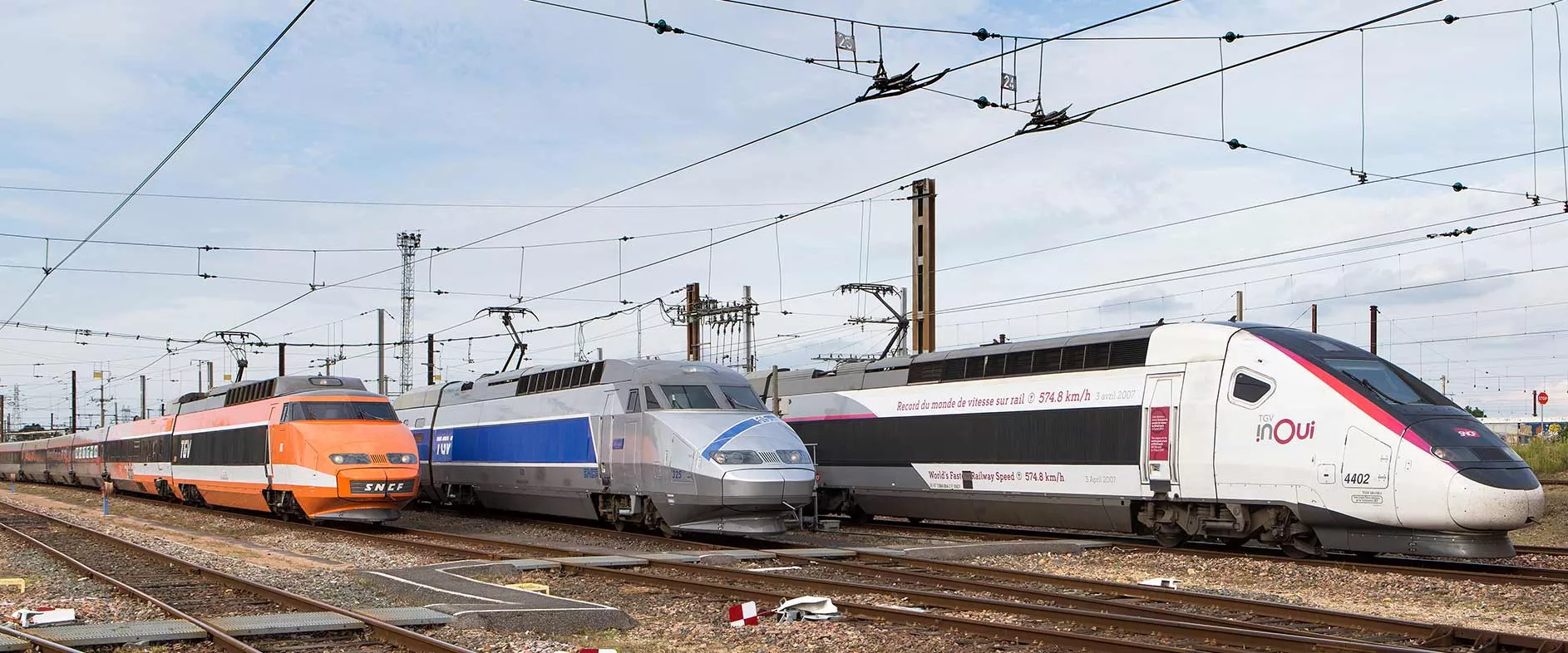
TGV: it’s the stuff of legends!
TGV has been innovating and setting records since the first high-speed line was inaugurated in 1981. Discover the history of this iconic train, from 1966 and Project C03, which envisioned the future of high-speed rail, to the recent TGV INOUI 2025 trials.
An ambitious, visionary project
In 1966, when top rail speeds were 200 km/h, an ambitious plan was hatched to create a high-speed train. Code-named Project C03, it led to the futuristic train’s original design, inspired by the Murène Porsche, which was sketched by Jacques Cooper. Beyond notching up remarkable speeds, the prototype introduced a key innovation: the “articulated” trainset, featuring a non-deformable structure with two carriages sharing a single bogie. Another breakthrough was its onboard cabin signalling system with track-to-train transmission (TVM). These innovations would ultimately make the TGV the world’s safest train.
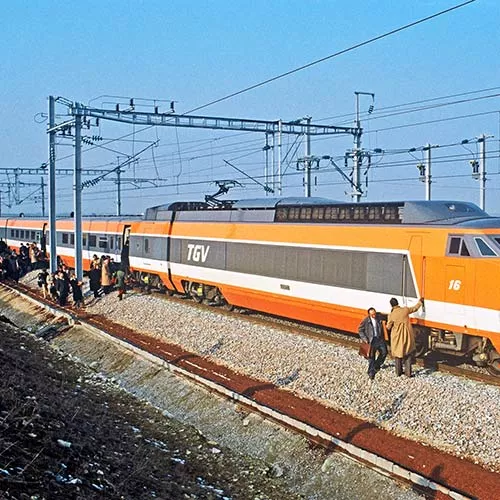
The first high-speed line is rolled out
In 1973, the oil crisis prompted a shift in the TGV’s planned propulsion system, and the prototype was modified to run on electric tracks. In 1975, the first two TGV trainsets were ordered, and by 1978, trials were completed. In 1981, President Mitterrand inaugurated the first high-speed line. Despite a power failure, the train reached its projected speed of 260 km/h. Commercial service grew, with traffic increasing 70% between 1980 and 1990.
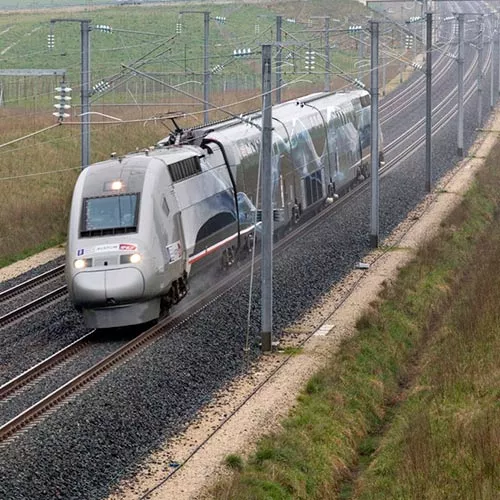
40 years of world records
The TGV set three world records—in 1981, 1990, and 2007—and has come a long way since that first 380 km/h record in 1981. Today it holds the world speed record for rail, an incredible 574.8 km/h! Learn more in this video.
TGV—from strength to strength
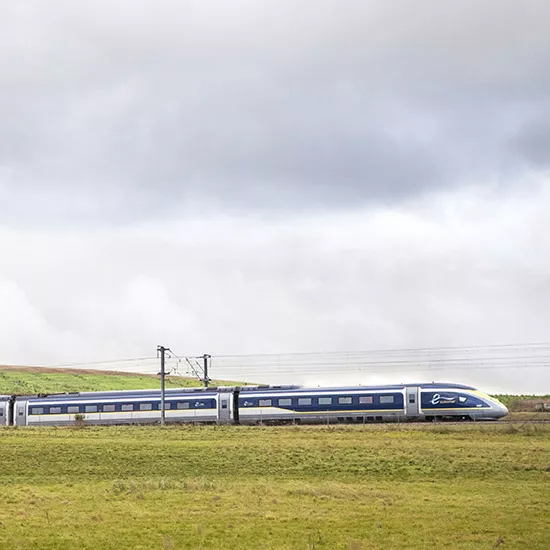
Expanding into Europe
In the 1990s, SNCF and relevant authorities expanded TGV service to a selection of European capitals. Eurostar was launched in 1994, linking Paris and London in just a few hours. Two years later, Thalys service got underway, connecting Paris to Brussels and Amsterdam. Next came Cologne, Milan, Frankfurt, Stuttgart, Luxembourg and Barcelona as the TGV network expanded.
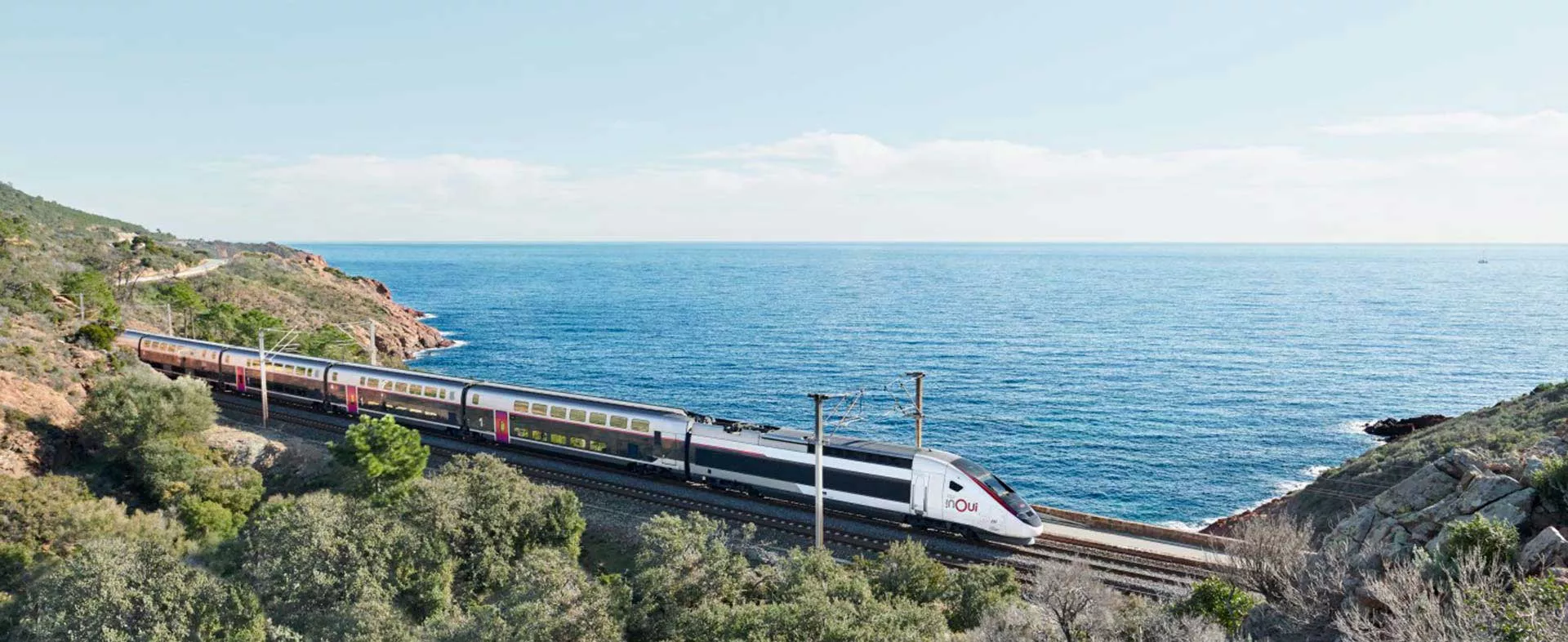
TGV redraws borders
With its Mediterranean high-speed line launched in 2001, and the East European high-speed line in 2007, TGV has redrawn borders. Marseille is now just 3 hours from Paris, Luxembourg a mere 2 hours and 15 minutes, and Frankfurt 3 hours and 45 minutes away. TGV rolling stock is also now exported to Spain, Korea and Morocco. And history continued to be made on 2 July 2017, when, for the first time in France, two high-speed lines were launched simultaneously: the South-East Atlantic line and the Brittany-Pays de la Loire line.
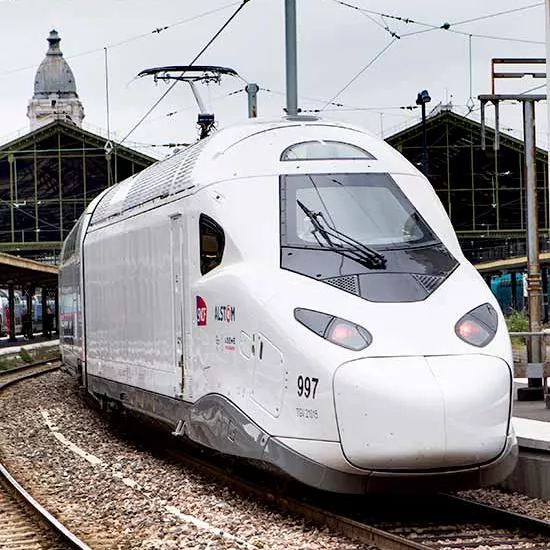
An eco-friendly TGV for 2025
TGV M is packed with ground-breaking innovations: it’s 97% recyclable, has improved aerodynamics, and can tailor onboard power use to its passenger count. Plus, it’s 100% connected. Named “TGV M” for its modularity, this fifth-generation train developed by Alstom is set to launch in 2025. It promises to consume 20% less energy and will have a carbon footprint 37% smaller than today’s trainsets. Testing on the French rail network began in 2023. SNCF has ordered 115 trainsets, including 15 international versions, that will enter service gradually over the next decade.
Back to the future: comparing the first and next TGV
Share the article